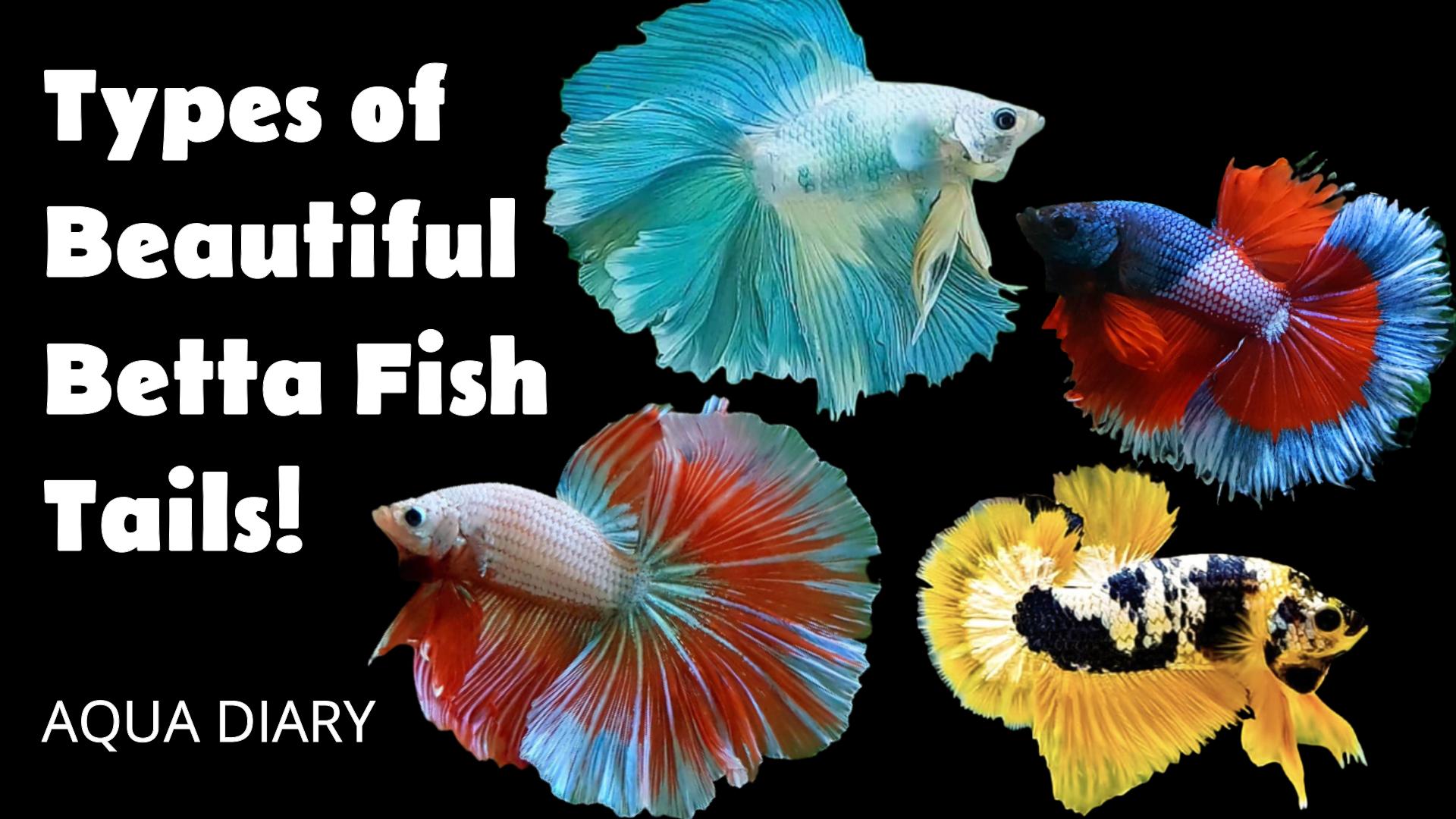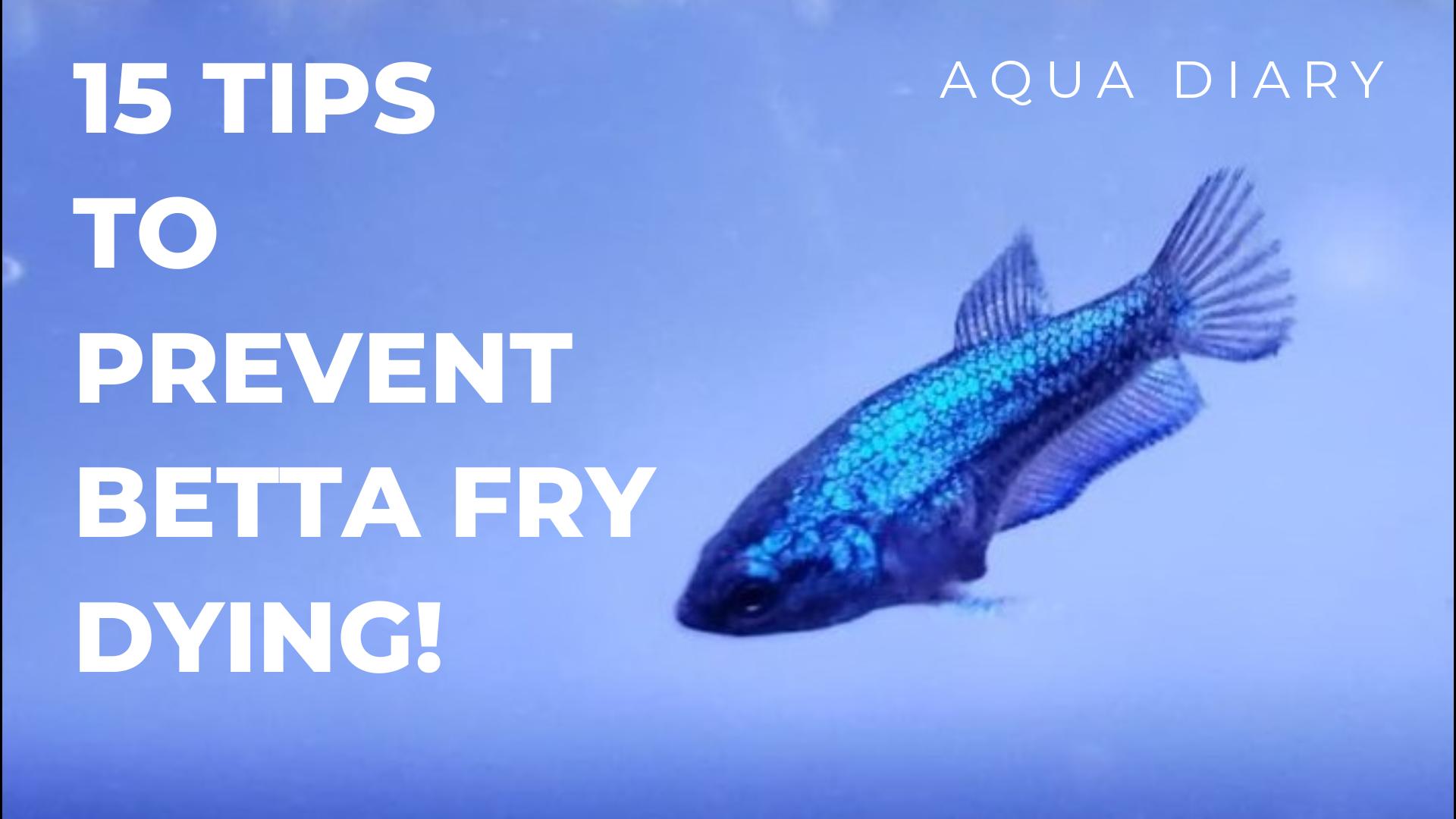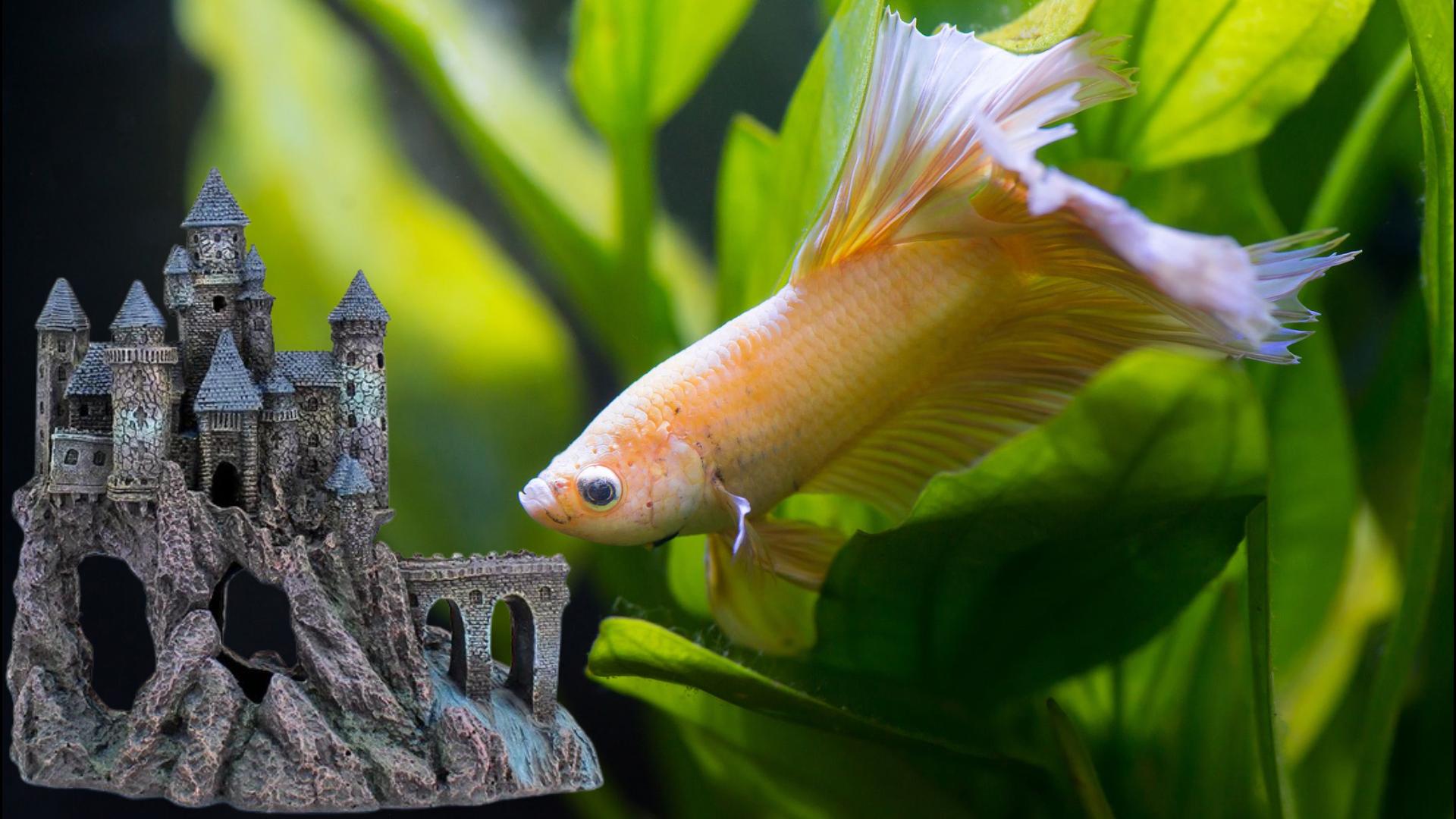Have you ever wondered, How many types of Betta fish there are? To be honest, trying to figure out betta types will be kind of confusing. Some break it down by tail type, others by tail type plus color, and still others by tail type, and pattern.
The most common way of breaking out betta types is by tail type. Let’s break down the 12 most popular betta tail types since easiest way to organize the betta types.
#1 Veil tail
.jpg)
The veil tail is seemingly the most well-known tail type found in pet store bettas. They have considerably long, hanging tail blades, which give the presence of a veil. It is the most common type available in pet stores, sometimes the only variety, and is often simply referred to as just a regular betta rather by its tail type.
On the good side, Since they are common and bred by the millions, you can find them in almost every pattern and color combination possible. Veil tails are not strong swimmers and do best with only a gentle current in their tank to support them.
#2 Crown tail

Crowntail betta fish are a very popular choice. Named because of the spiky appearance of the fins – just like that on the top of a crown. When I first time seen these bettas, I thought this bettas were injured fins. LOL! anyway, that’s my childhood dumb story.
Crown tail betta fish prefer solitude, and they are aggressive and territorial by nature. The crown tail is a popular breed that is more commonly found in pet stores in recent years than it has in the past, perhaps popular due to its unique look.
#3 Comb tail

Combtail betta fish are similar to crown tails in that the tail’s rays are longer than the webbing. However, combatants use this feature more subtly. The combtail, sometimes referred to as the half-sun, is a combination of crowntail and non-fringed single-tailed genes.
The result is fringe on the fins with minimum webbing. While crowntails have long-looking fins, the combtail has a slightly spiked-looking appearance. I like the half sun because it’s stunning and unique, but the tail isn’t overly extreme like feather or retail.
#4 Double Tail – Betta Fish Types
A double-tail betta can be recognized due to possessing two distinct tails that are separated from the base. Double-tail betta fish also tend to have a larger dorsal fin. The double tails are the result of a genetic mutation that is present in all Bettas. Because of that, double tails will be found with any tail shape.
Double tails are often bred to create a single-tailed spawn due to the beautiful length of their fins and the fact that many double tails bred with other double tails can result in deformities.
#5 Spade tail
Named because of the very clear spade-like appearance of the caudal fin. The tail has a wide base which then narrows smoothly to a point.
The spadetail is often confused with the veiltail, the spade tail has a long caudal fin that comes into the shape of a point which differentiates from the Veiltail.

#6 Halfmoon

Halfmoon bettas are perhaps the most wanted type of betta fish. The half-moon tail is large and when flared the caudal fin will fan 180 degrees which causes the tail to create a half-circle – and that is where the name comes from. This makes the pattern look even more beautiful since the anal, dorsal, and caudal fins all overlap each other like flower petals.
This variety is also widely available in pet stores, but it’s not quite as common as the veil tail and crown tail. Most butterfly Bettas have the Halfmoon tail type. This makes the pattern look even more beautiful since the anal, dorsal, and caudal fins all overlap each other like flower petals. I must say, Halfmoon bettas are my favorite bettas too.
#7 Over Halfmoon – Betta Fish Types

Over-halfmoon betta fish have similar fins to halfmoon bettas. The difference is that when flared the caudal fin will fan over 180 degrees creating a shape that is larger than half a circle. I always wondered if Halfmoon bettas are just well-grown Halfmoon bettas, it doesn’t matter anyway.
#8 Delta tail

The delta tail type is similar to a halfmoon fin however the tail does not reach 180 degrees. A delta tail starts to narrow towards the body of the betta fish and widens towards the tip giving it a triangular shape.
An enhanced version of the delta is known as a super delta and this version describes the fins to be just short of a full 180 degrees required for halfmoon status. Delta tail betta fish carry a dominant gene and breeding them can result in more delta tails, super delta tails, and sometimes half-moons.
#9 Dumbo Ear
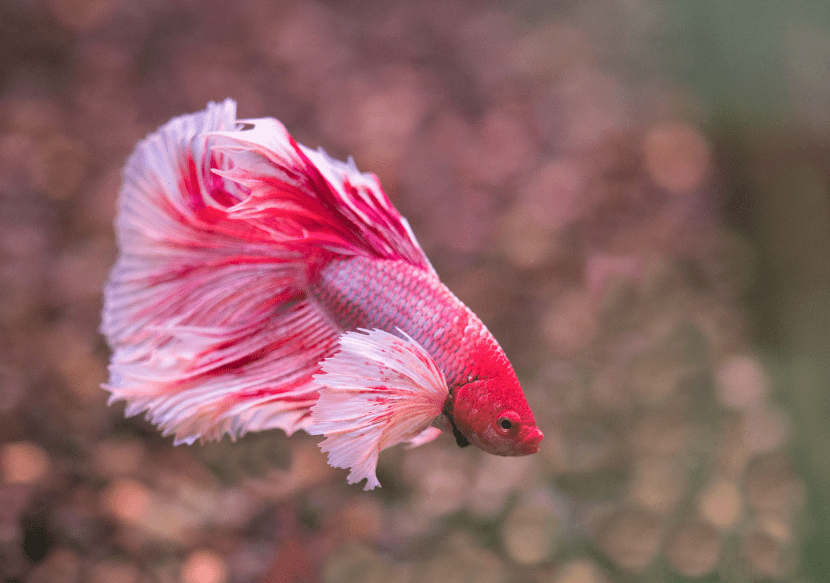
Ok, not quite a “tail type” however the dumbo ear or elephant ear betta fish has a fantastic aesthetic due to its fins. Dumbo Bettas have enlarged pectoral fins that will be as much as 5 times bigger than normal and have giant ruffled edges.
These extra-large pectoral fins result in fins looking like elephant ears. So sometimes called elephant ear Bettas. So they’re constantly fluttering these ruffled fins. It looks almost like a dancer with a big feathered fan.
#10 Rose tail
The rosetail is a beautiful variation of the Halfmoon tail type. Just like a half-moon, their tails can spread to 180°, but all the extra rays mean that the tail folds back and forth in on itself. They really do look like flowers or a frilly dress.

All that extra fin does weigh the fish down, though, and can impede their swimming. And it’s easy to snag all that extra fin on things in the tank. So make absolutely sure there are no sharp or rough edges to damage that gorgeous tail. Some argue that the price for these beautiful tails is too high. Is that not worth this business?
#11 Feather tail
The feathertail is very similar to the rosetail however there is even more excessive branching of the fin rays giving an extra ruffled appearance. They have the extra rays and branching like a rosetail but they also have fingers of rays and webbing that make the edge of their fins look like, well, feathers.

They are really beautiful. Their fins flutter around as they move and you can’t help but be a bit mesmerized. But, just like retails, feather tails can be prone to problems like ragged fins, broken rays, tail biting, and shortened lifespans. Feathertail bettas get sold at a high price in pet stories. Of course, beauty comes with a price tag!
#12 Plakat
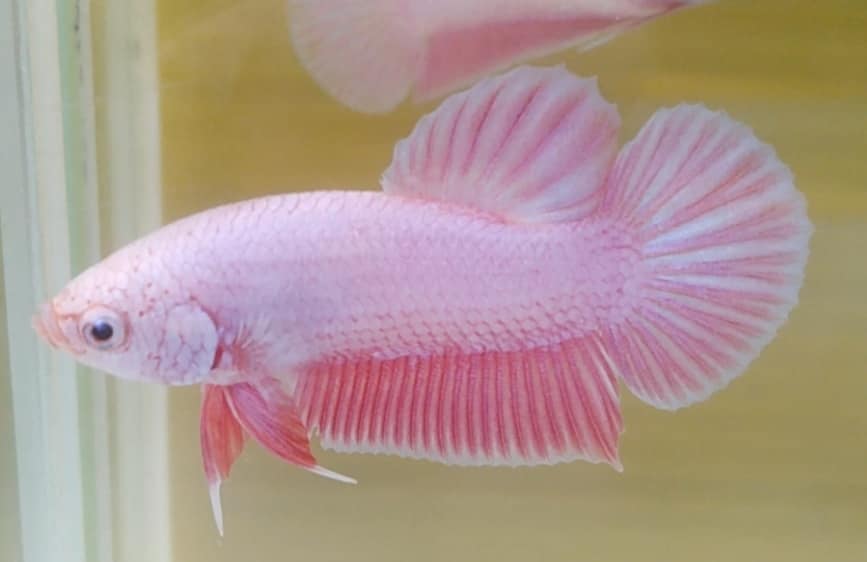
Generally speaking, the term Plakat betta is used to describe a short-finned betta fish. The tail is short and round on the traditional Plakat. They are faster than long-finned varieties and much stronger swimmers; thanks to small fins.
Plakat bettas also have a bad habit of jumping out of their tanks. You absolutely need a tank with a tight lid that doesn’t have any gaps. If you’re interested in the marble and koi patterns, these are the fish for you. Most of the marble koi that have been bred are plakat varieties. Thanks for checking out our page.
In this section, let’s divine more types of Plakat Betta types. Plakat Bettas are of the Koi variety, so their shape reflects Plakat, which is basically a variation of marble Bettas. Koi Bettas come in an assortment of colors and types that attract every Betta lover.
There are six types of koi bettas you can usually find in specialty stores or online. The most common Plakat betta types are Fancy, Galaxy, Candy, Tiger, Nemo Plakat, and Samurai Koi.
#1. Galaxy Koi Betta – Betta Fish Types
There are plenty of Koi Betta Fish in the aquarium for sale, but one of the most sought-after is Galaxy Koi Betta Fish. Galaxy koi fish are actually koi betta fish with shiny bodies, making them called galaxy fish. A Galaxy Koi Betta Fish generally has a red, yellow, or blue base color.
The mix of colors in the pattern gives it the appearance of a galaxy. The galaxy-like pattern is one of many reasons why people love it.
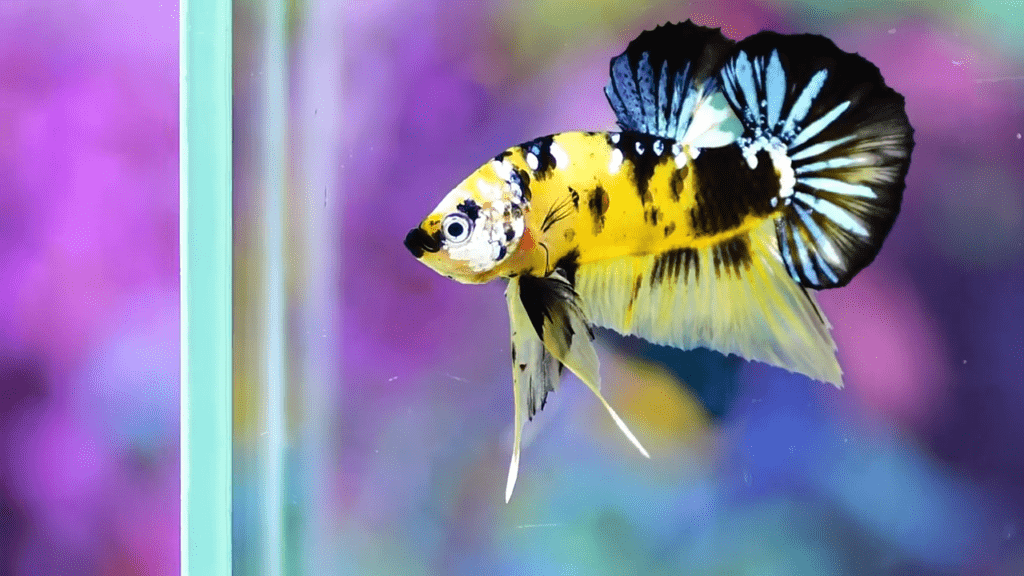
#2. Candy Koi Betta – Plakat Betta
Koi Bettas with candy-like colors are commonly known as Candy Koi Bettas. Candy Koi Bettas can be found in black, red, blue, and yellow colors.
Their name matches the fact that they look like candy treats. I prefer to refer to them as ice cream bettas since they are reminiscent of sorbets and ice cream bars.
Candy Koi Bettas have the presence of all three base layer colors, yellow, orange, and red, with black being an optional element. It also has the presence of a detailed pattern on the body or lacing on the fins
A true Candy should have the presence of all 3 base layer colors. Yellow, Orange, and Red are the primary colors of Candy koi bettas with black being optional.
It should also have the presence of a strong base layer in patterning on the body or lacing on the fins. In order to be considered a true candy, the coloration of the fish must contain at least 5 colors.
#3. Tiger Koi Betta
The tiger betta has a striking yellow body and black or blue colors complementing it. It looks so like a real tiger with its orange coloration and black stripes. Tiger Koi Betta displays his aggression very well, sometimes even roaring!
#4. Nemo Koi Betta – Plakat Betta Fish Types
Nemo Koi Bettas are generally known for their orange, black, and yellow colors. They can be viewed as a full-colored Koi Betta with a mix of Red and yellow, Orange, or any of the three colors in the Base Layer. Nemo is used to identify fish with a clean, marbled appearance without much focus on iridescent, scaling layers.
A good Nemo should have a visible base color that is easily seen by the eye, not obscured by iridescent layers. Depending on how the body is textured, it should be either large blocks or splattered. The body should take center stage in the color.
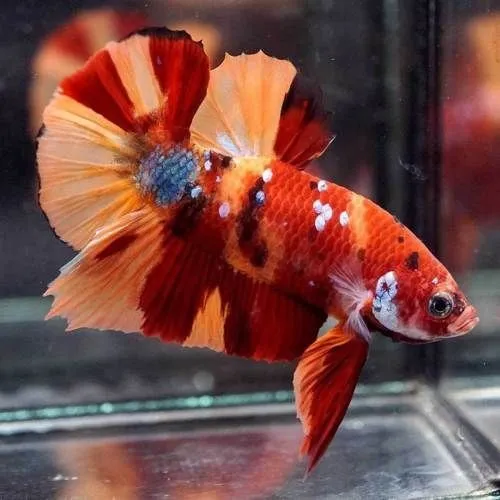
#5. Fancy Koi Betta
Unlike Koi Bettas, Fancy Marble Bettas exhibit at least three different colors. The Koi Betta is not found in the wild since they are a result of a genetic mutation. As a result, the colors of the Koi Betta can change over time as they age since the mutations can change their position within the genome. So if the colors of your Koi Betta change after a few weeks, don’t be surprise
#6. Samurai Koi Betta – Plakat Betta Fish Types
The Samurai Koi Betta is exceptionally rare, boasting dragon scales and marbles in various colors. These Bettas are typically a mix of gold, red, and black Dragon scales, combined with a Halfmoon plakat of different colors.
This results in a Betta with Dragon scales on the top half and normal scales on the bottom.
For proper Betta care, remember a few essential tips. Maintain a tank of at least 2 gallons in size. Keep the water pH between 6.5 and 7.5, and the temperature at 76-81°F, using a dechlorinating water conditioner when adding water. While not necessary, a filtered tank reduces cleaning frequency.
Provide one or two hideouts in the tank for your Betta’s comfort.
Choose decorations and plants with smooth surfaces to protect their delicate fins. Feed your Betta once or twice daily with 5-8 pellets based on their size. Following these guidelines ensures a healthy, happy Betta.
As next, lets look at subtypes of crowntail betta fish. Betta fish with crown tails have long fin rays that extend far beyond their membranes, giving their tails the appearance of a crown.
They differ from other Siamese fighting fish varieties by having a crown-shaped caudal fin. The long-finned Crowntail is particularly impressive and highly desired by betta enthusiasts. It is available in short-finned and long-finned forms.
Crowntail Betta fish are 100% man-made varieties. A Crowntail was first developed by Indonesian breeder Achmad Yusuf in 1997 and later bred into different varieties by several breeders.
There are 5 primary types of Crowntail betta fish that you can normally find in specialty shops or from reputable breeders. The five types of crown tails are Single ray, Double ray, Triple ray, Random ray, and Cross ray crown tail.
1. Single ray Crowntail
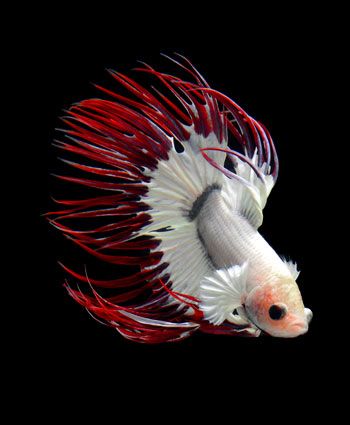
There is only one ray that extends beyond the tail edge of a single ray crown tail. There should be an equal reduction in webbing reduction for primary and branching rays in an ideal web. The single-ray Crowntail betta fish is the most common variety available at pet stores and breeders. Most people believe that crown tail betta fish are only available as single-ray crown tails, but that’s not the case.
This is one of the early generation of crowntail betta fish, now a days, they are not much available as its overinbreed lead to randomray tail.
2. Double ray Crowntail – Crowntail Betta Fish Types

Crowntail betta fish with double rays have each ray split into two and extend beyond the tail edge. There are two levels of webbing reduction: One level is between pairs of rays, and the other is more profound between two ray branches. The Double Ray Crowntail Betta fishes are considered ideal crown tail betta fishes by Bettas4all. There is a primary branching with a 50% reduction in webbing between the primary rays and a 25% reduction between the secondary rays which creates a crown-like appearance. It’s a 50% reduction in webbing on the crowntail’s dorsal and anal fins. The tail should be a balance between the empty spaces between the fin rays and the remaining webbing in the crown tail.
3. Triple ray Crowntail
There are three rays extending beyond the tail of each primary ray of the Triple ray crown tail. Betta fish of this variety are relatively uncommon and difficult to find on the market. As far as I know, breeding triple rays is somewhat difficult. In the past few years, I have only had a few successful breedings of triple ray crown tail betta fishes.
4. Cross Ray Crowntail (King Crowntail)
The cross-ray crown-tail betta fish, also known as the King crown tail, is classified as the rarest of all crown-tail betta species. Unlike the other crown-tail betta fishes, this variety has cross-rayed caudal fins that curve over each other, while the general Crowntail has only straight caudal fins.
Because of its distinctive feature, the Cross ray has been called the King crown tail and is considered one of the rarest species of betta fish.

There is now a variety of black cross-ray crown tail betta fish; this black and spiky variety is known as Venom Betta because of its appearance. Venom is a high-quality variant of the black cross-ray crown tail beta fish. It resembles the movie character Venom due to its black and spike appearance. Cross-ray betta looks really eye-catching when male in full form. Venom beta’s tail is distinctive, featuring a distinctive webbing pattern. Owning one of these is an exciting prospect for Betta lovers.
5. Random ray Crowntail
In random Crowntail Betta fish, each ray is split into single or multiple rays which split again at the tail edge randomly.
This leads to random rays beyond the tail edge. It is only the caudal rays that account for the amount of rays mentioned above. The anal and dorsal regions have a single extension beyond the edge, just as other crown-tail betta fishes have.
6. Combtail and Suntail
Combtail and Suntail betta fish are not part of the Crowntail betta fish variety. However, betta lovers often mistake them for crown tails because they have the same patterns.
Like a crown tail betta, the rays in the tail of a combatant are also longer than its webbing. However, fin extensions are shorter than crown tails. The sun betta is a result of selective breeding of crown tail and halfmoon betta fishes. Its tail has a 180-spread like a half-moon and an extended caudal fin webbing like the crown tail. As the tail looks like a rising sun, it is also known as the Half-until betta fish.
Must know Crowntail Betta Fish Types
Make sure your fish tank is at least 2 gallons, ideally 5 gallons. Water with a pH value of 6.5 to 7.5 and a temperature range of 76 to 81 degrees Fahrenheit is ideal for Betta fish. If you notice any abnormal signs in your betta fish, you should check the pH level of your aquarium. Betta fish don’t need a filtered tank, but it will keep the water clean, so you won’t have to spend as much time cleaning it.
It’s good to have at least one or two hideouts in a betta’s tank, so your fish have somewhere to hide. There are many types of hideouts, including silk plants, swim-throughs, and rocks. Betta fish have delicate fins, so pick decorations and plants that won’t catch on their fins and tails.
Crowntail Betta Fish Types
You should feed your betta once or twice a day regularly. The size of your betta will determine how many pieces you should serve him when feeding pellets food. No bowls, please.
Those are for eating cereal out of! It’s recommended to feed your betta fish four to seven pellets at a time, which can be consumed within three minutes. If full recycling isn’t possible, at least 20-50% of your tank’s water should be changed regularly. Betta fish jump, so always secure a lid or keep your water level 2 inches below the top of your tank. If you plan to add other fish to your tank with Betta fish, do your research first.
We publish aquarium blog posts every week. You can leave us a comment below if you have questions about Crowntail betta fish or if we missed any specific type of Crowntail betta fish. Let us know in the comments. Thank you for checking out this post. See you on the next topic.

